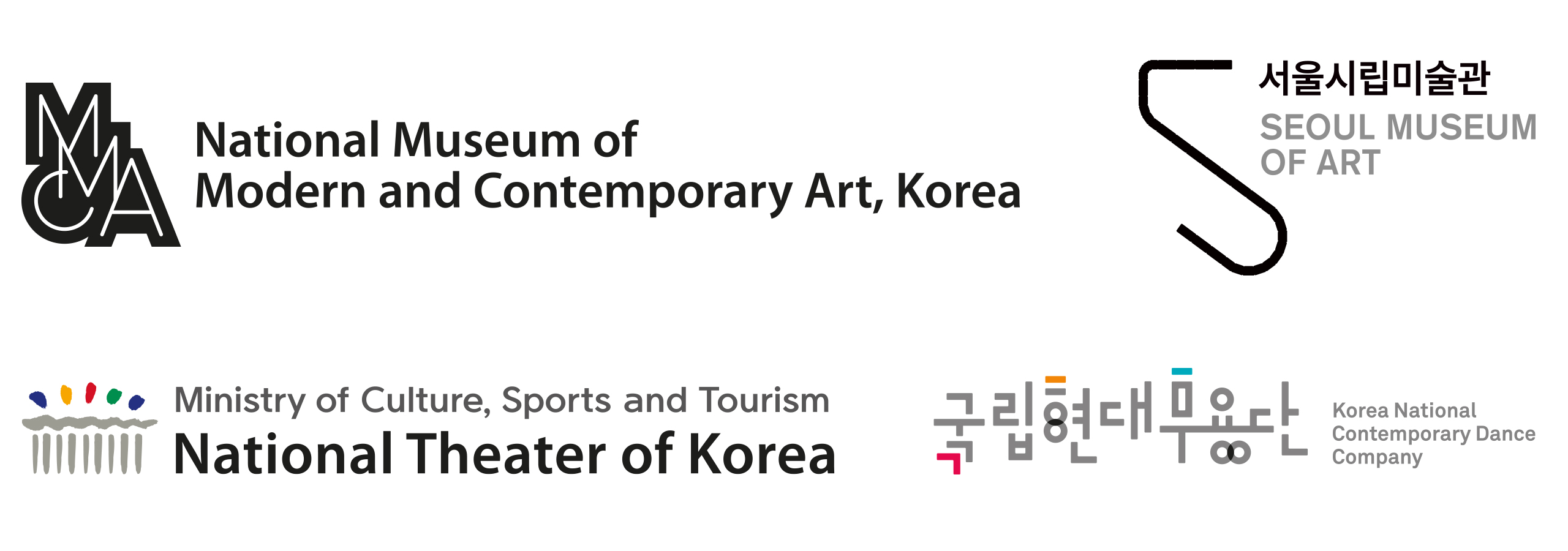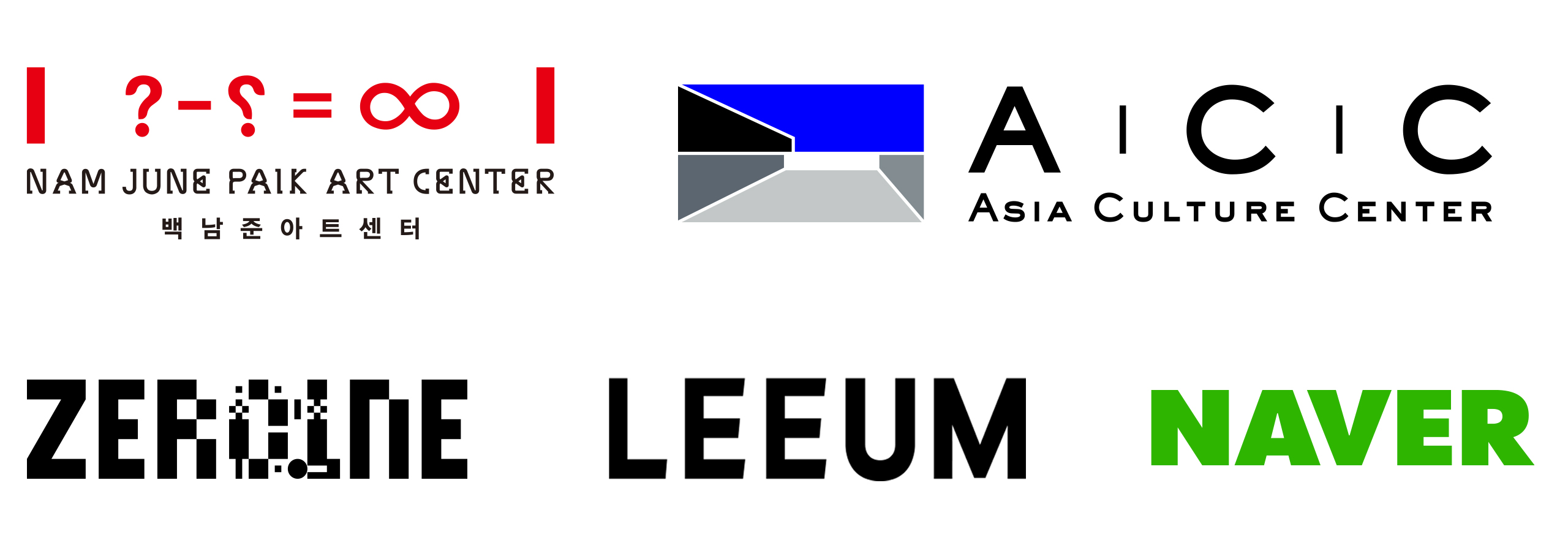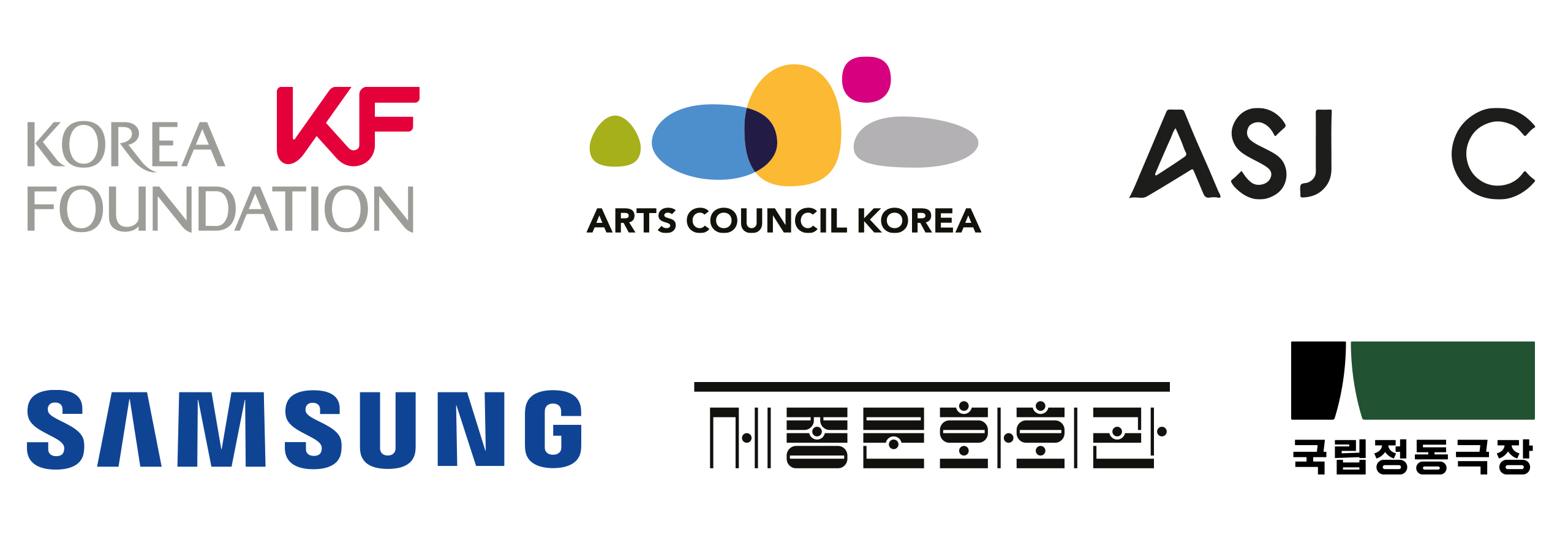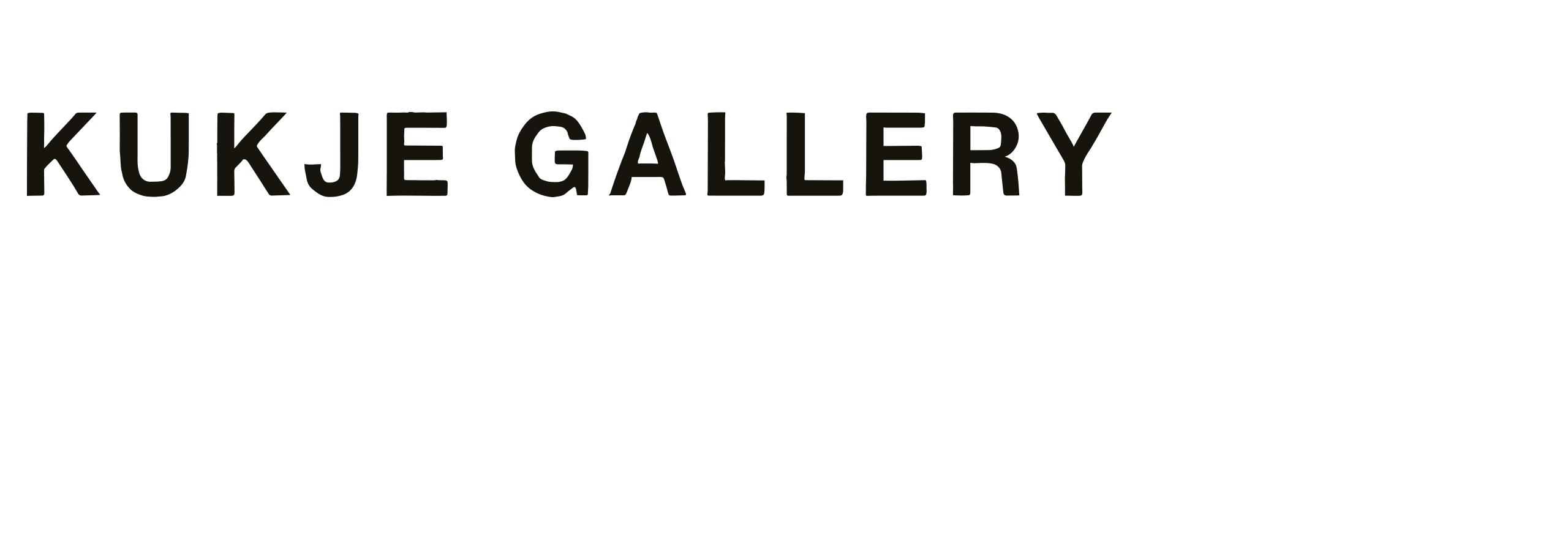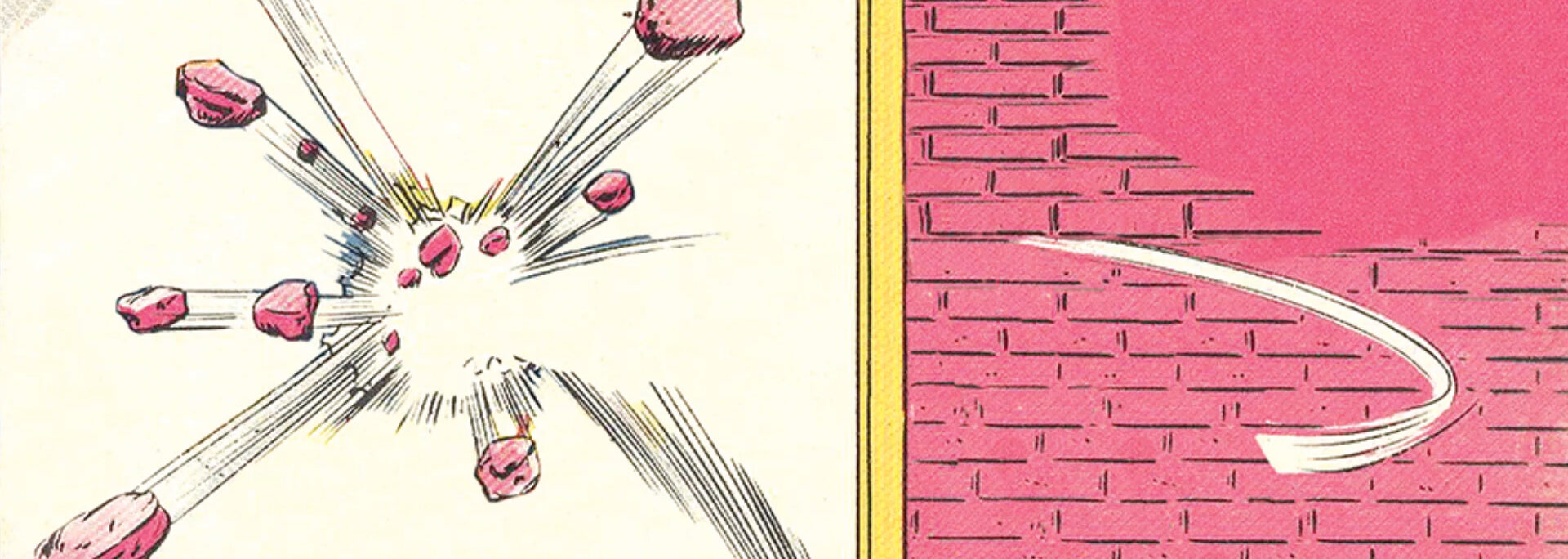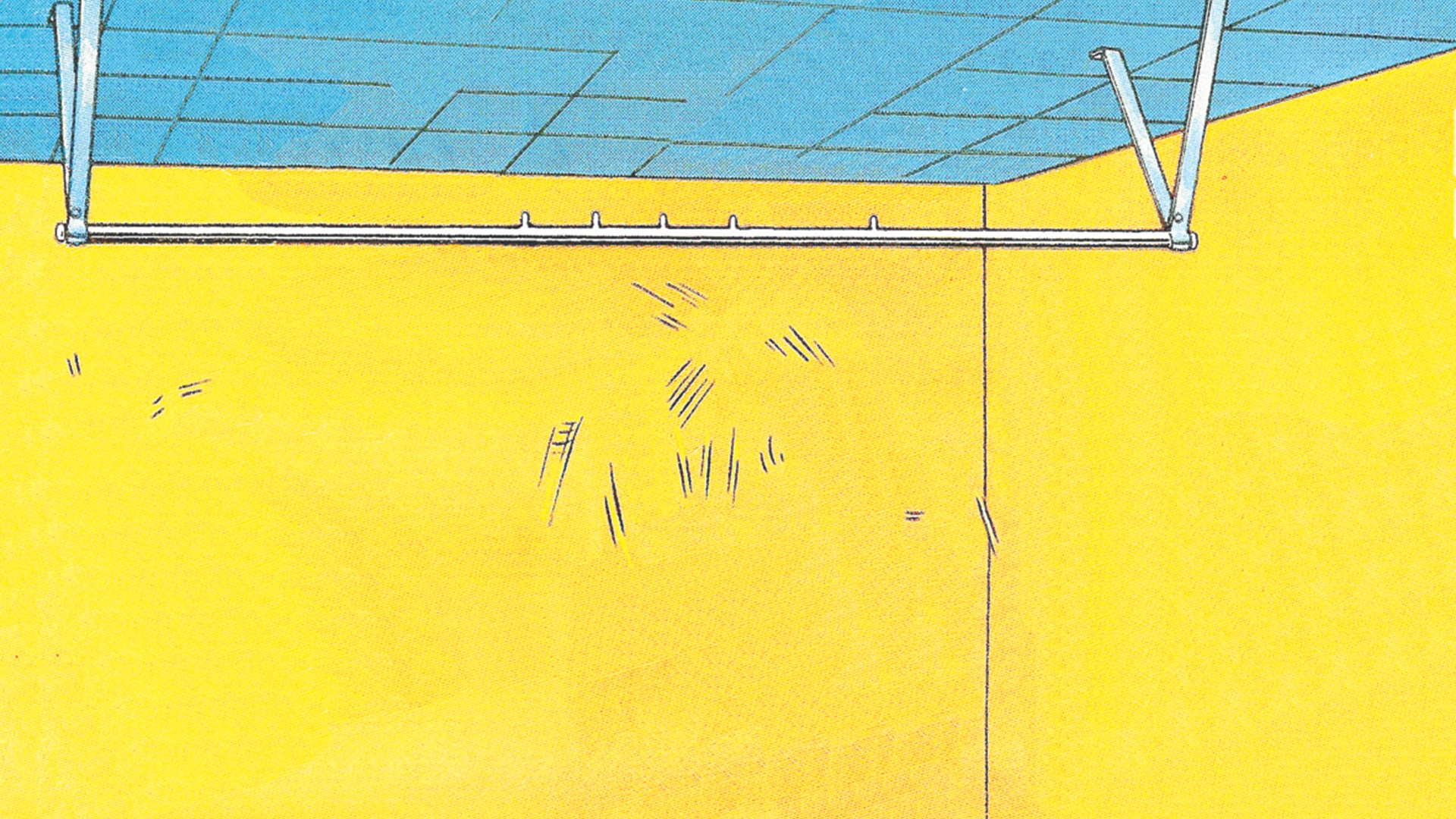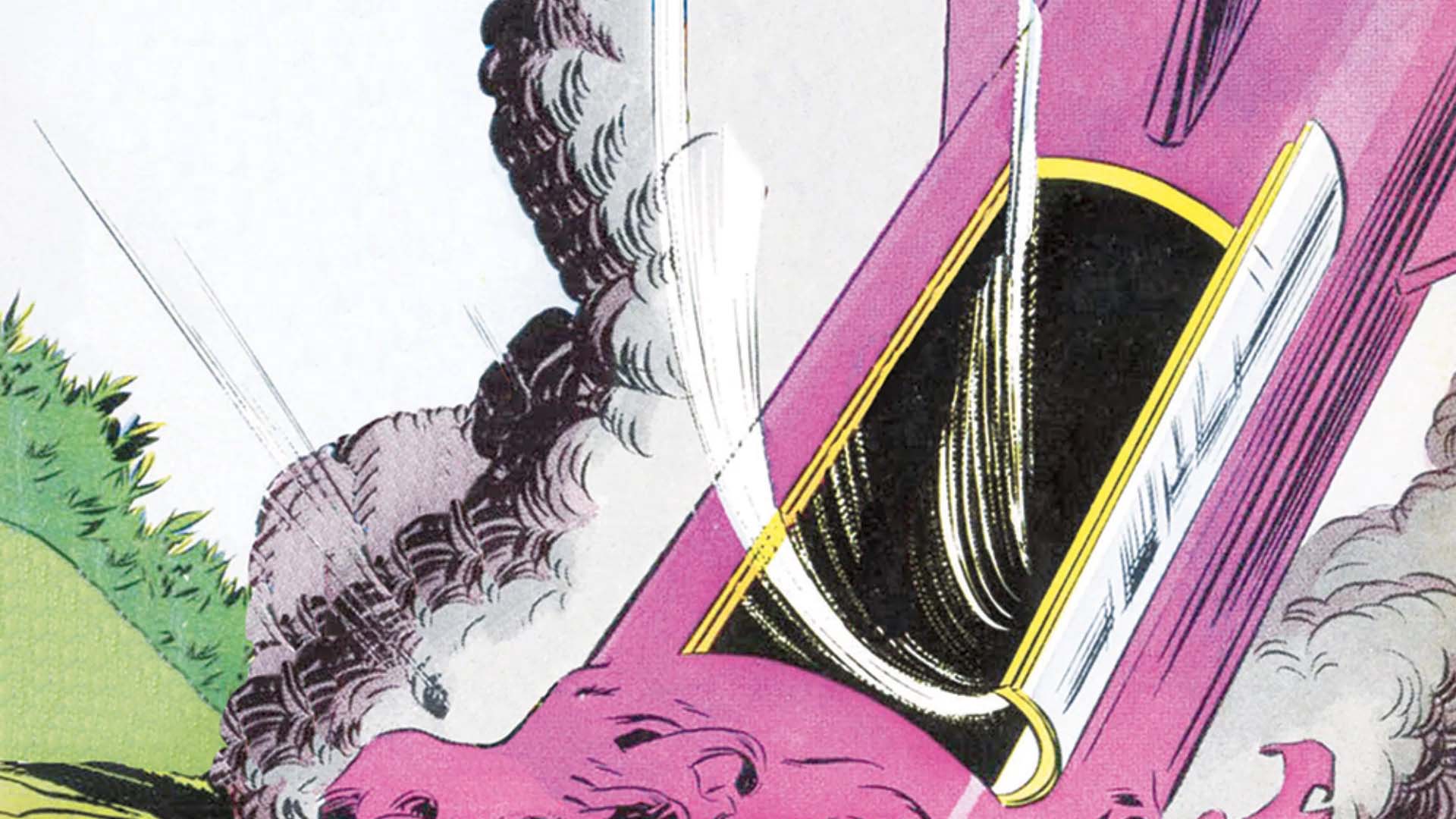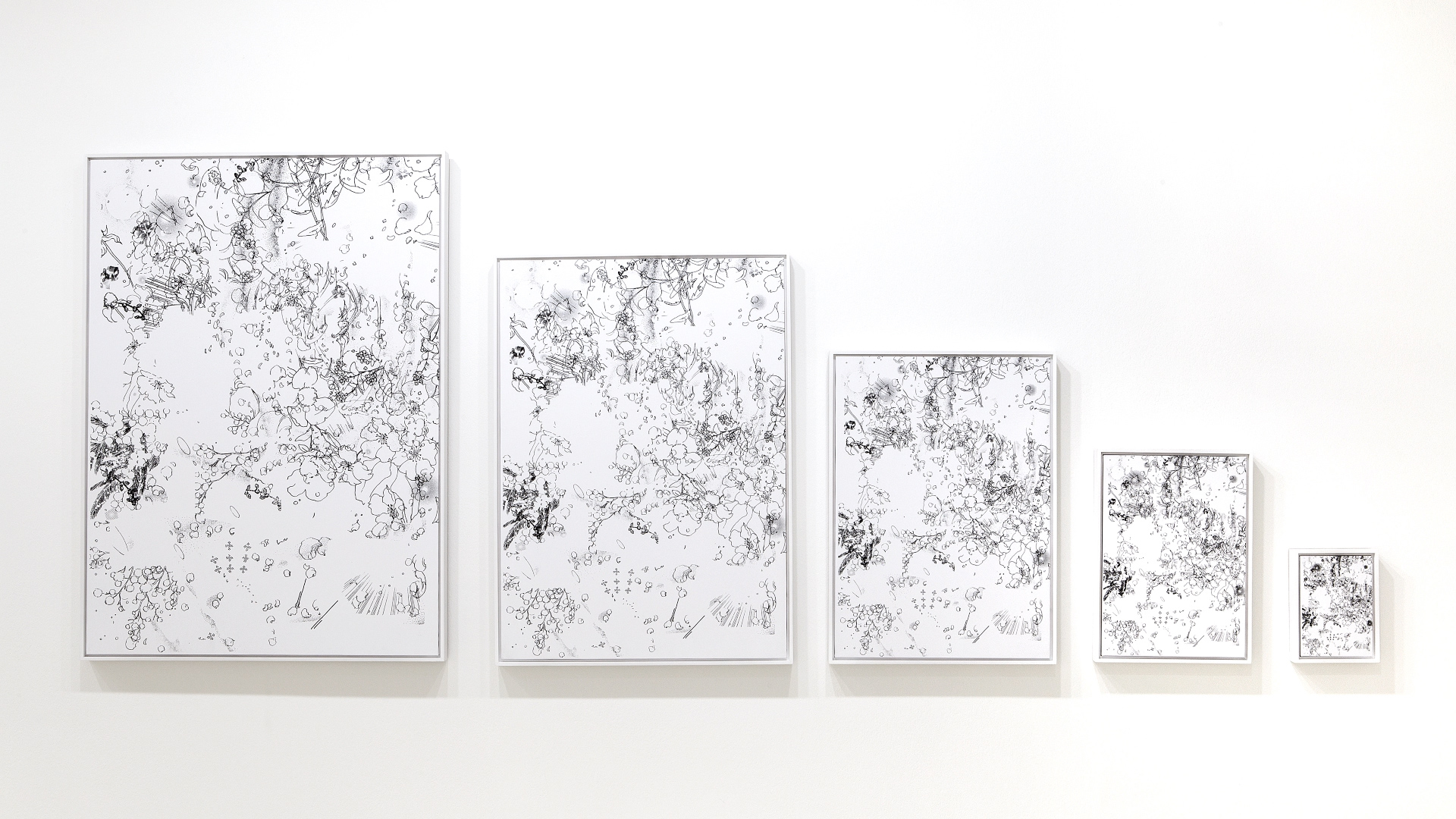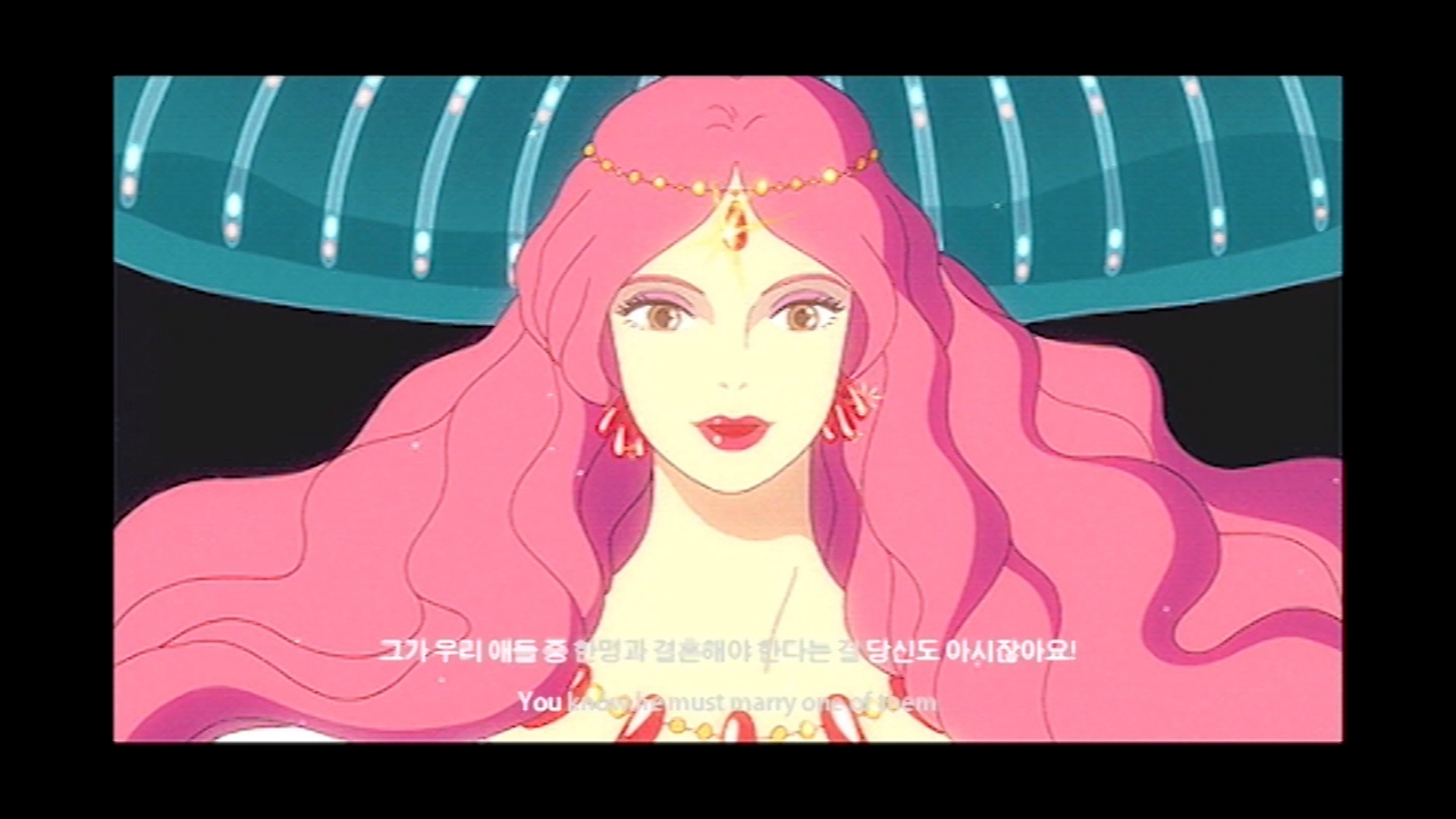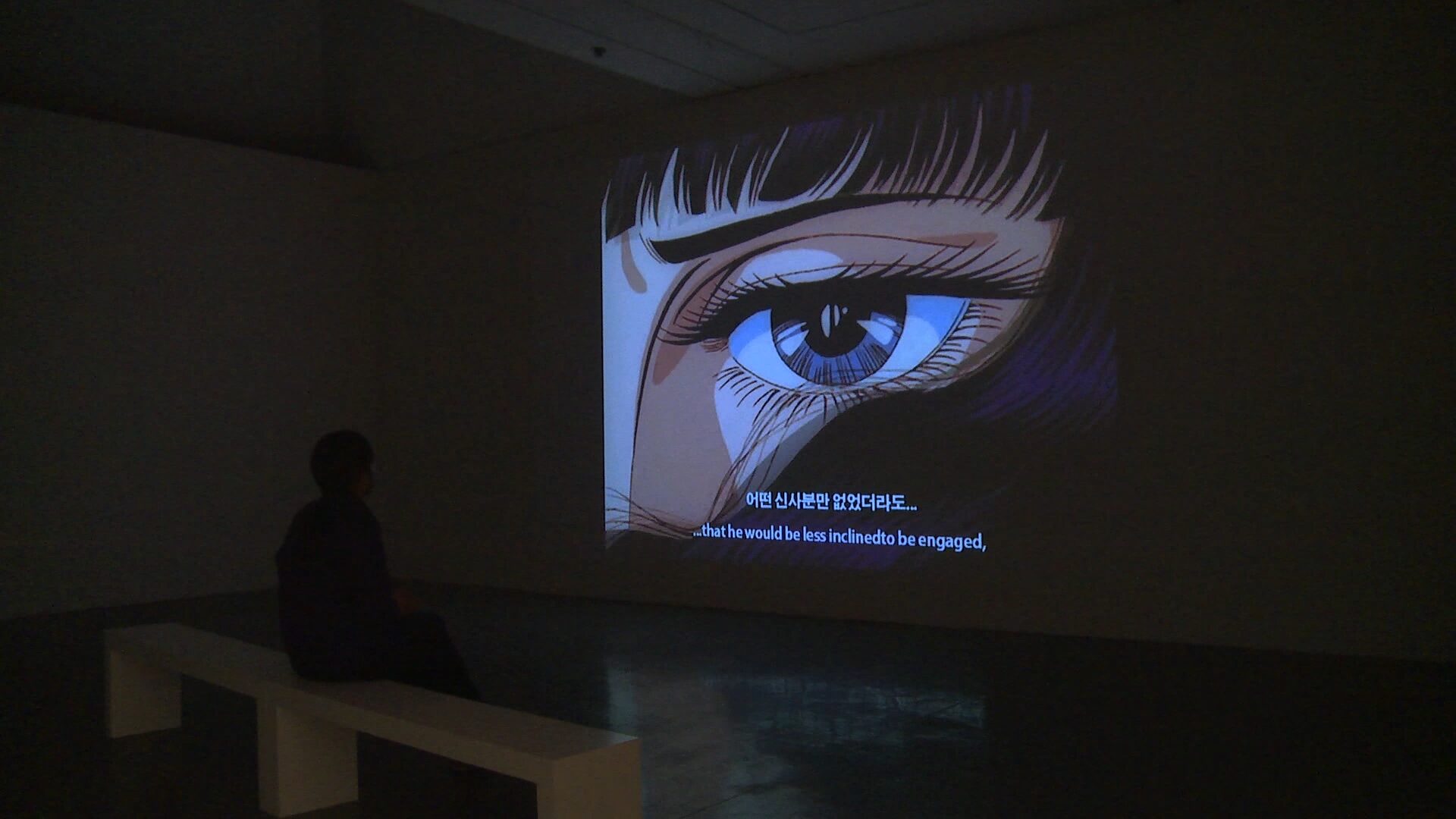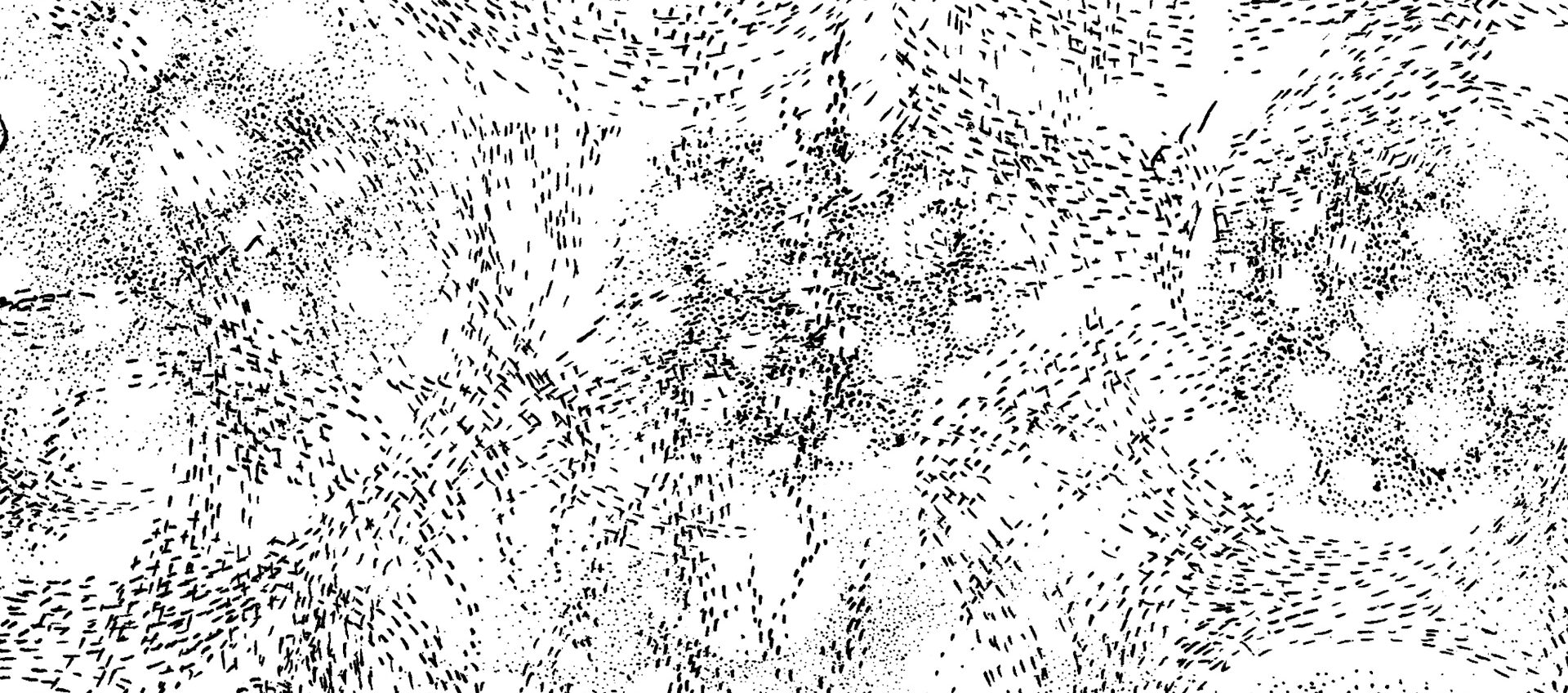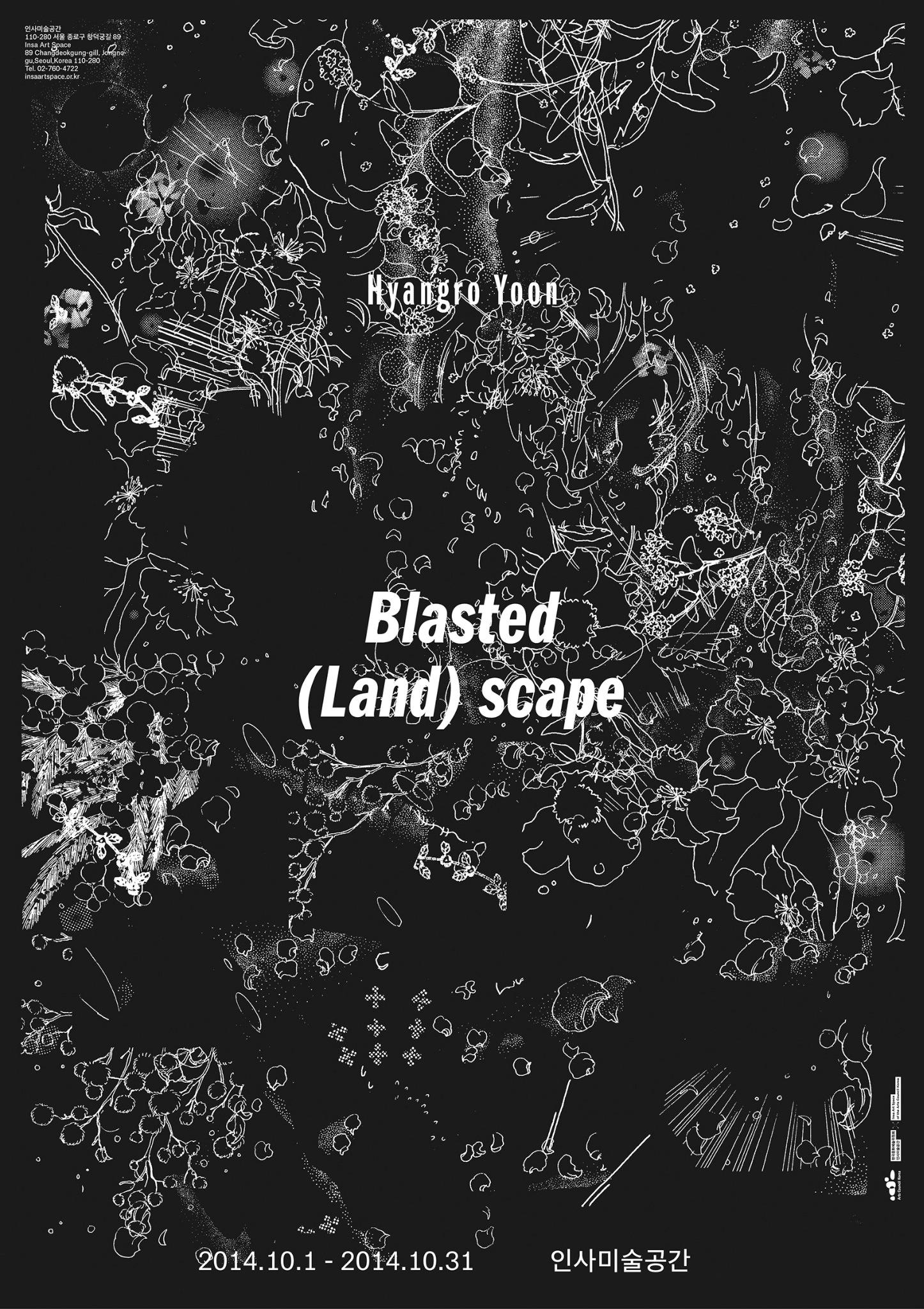윤향로는 이번 전시에서 대중만화의 도식적 도구들을 빌려와 실험으로써의 “풍경화”를 모색한다. 풍경을 구성하기 위해 활용되는 요소들은 내러티브의 극적 서스펜스나 심리적 정황 또는 인물의 모션 등을 예상하게 하기 위해 덧붙는 클리셰와 같은 장치들로 스파크, 동작선 등이다. 이러한 선들을 옮겨오는 과정에서 작가는 캐릭터와 대사를 지운 후 주변 공간의 흔적들을 선과 이미지 크기의 비율, 위치 값 그대로 가져온다. 다시 말해 작업에 얹혀진 원소로서의 이미지들은 선들이 아니라 주체가 지워진 상황 그대로의 레이어(Layer)인 것이다. 이렇게 추출된 켜를차곡 차곡 쌓고 배치하는 수행을 통해 산수화와 같은 이미지를 만든다.
작가의 최근 작업에서 사용되는 만화의 효과선(혹은 인터넷의 짤방_인터넷 게시판 유저들이 드라마나 뮤직비디오,영화의 주요장면을 캡처해 만든 움직이는 짧은 동영상 파일)들은 결과적으로 남게 된 작업 표면에서는 정보집적의 과정이 (잘)설명되기 어렵다. 수 천, 수 만 장의 만화 지면을 스캔하고 다시 모니터 상에서 필요한 선들을 가려낸다는 것은 물감과 같은 매제와 붓질의 여러 혼합단계의 과정과 비견될 수 있지만 윤향로의 매체는 물성으로의 그것이라기 보다는 데이터로서의 비물질과 결합한 회화이므로 이것이 어떻게 다른 차원으로 확장될 수 있는가 하는 문제를 전시장에서 마주하게 된다. (만화가가) 손으로 그린 이미지, (윤향로가) 눈으로 그린 이미지의 차이, 물직적인 것과 비물질적인 것의 교환, 주체와 배경의 왕복 속에서 회화는 어떻게 다른 차원의 요소와 결합할 수 있는가.
출처 : 한국문화예술위원회 홈페이지
Yoon Hyangro explores the idea of “landscape painting as experiment” in this exhibition by appropriating schematic devices commonly found in popular comics. The elements used to construct these landscapes—such as sparks, motion lines, and other visual clichés—typically serve to enhance dramatic suspense, psychological context, or character motion within a narrative. In the process of transferring these elements, the artist removes characters and dialogue, retaining the traces of surrounding space with original proportions, image scale, and positional values intact. In other words, the resulting images are not made up of lines as such, but rather layers that preserve the absence of the erased subject.
By sequentially stacking and arranging these extracted layers, Yoon creates images reminiscent of traditional Korean landscape painting (sansuhwa).
The motion lines from comics (or jjalbang—internet slang for short, looping GIFs captured from dramas, music videos, or films) used in Yoon’s recent works, however, rarely reveal the process of data accumulation on the work’s surface. While scanning thousands or even tens of thousands of comic pages and selecting specific lines from them is comparable to the process of mixing paint and applying brushstrokes, Yoon’s medium is not rooted in materiality. Instead, it exists in the realm of data and immateriality. This raises the question of how painting can expand into a different dimension through its combination with non-physical data—an inquiry that unfolds within the exhibition space.
The exhibition confronts us with the difference between images drawn by the hand (by comic artists) and images drawn by the eye (by Yoon Hyangro), and examines how painting can form exchanges between the material and immaterial, the subject and background—ultimately suggesting a way for painting to merge with new-dimensional elements.
Source: Arts Council Korea website.


